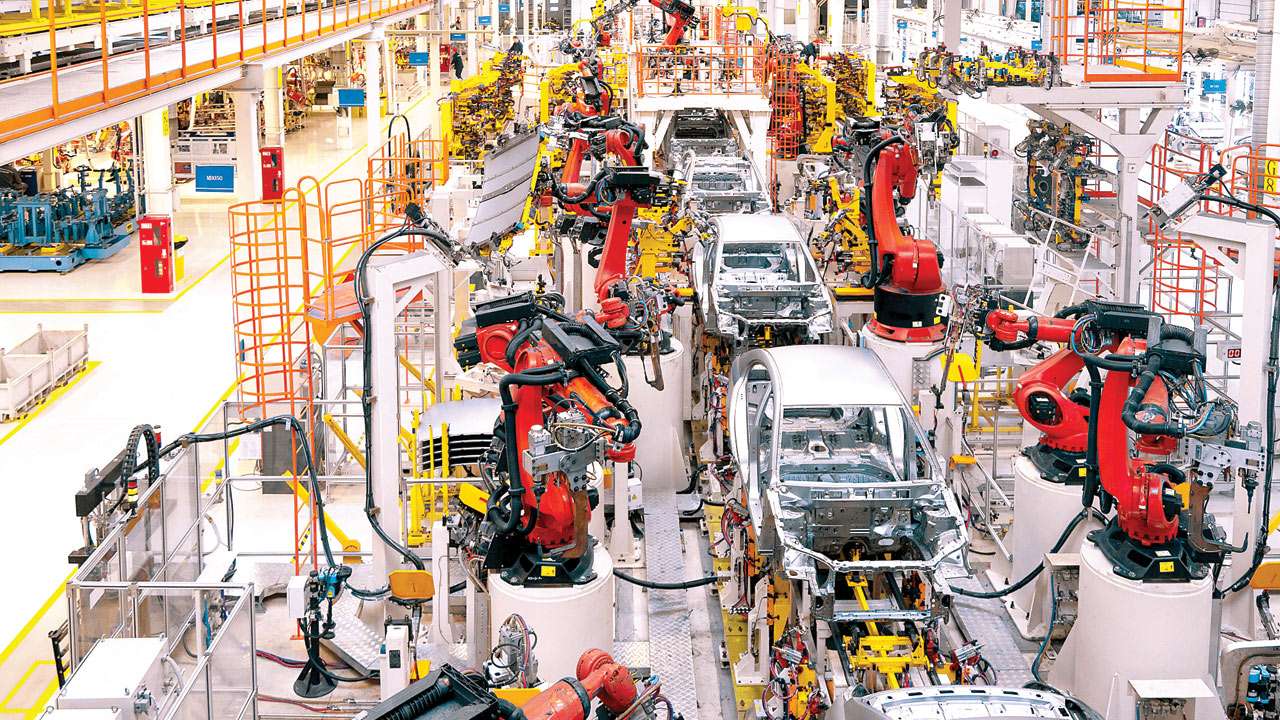Disruption, not slowdown
The inability and unwillingness to innovate have been the Achilles’ heel for Indian auto makers

Car manufacturer Indian car makers have had little value to offer by way of radically superior engine quality, apart from some cosmetic changes to the basic architecture , Istock
Not so long ago, Micromax was India’s largest seller of mobile handsets with some smart packaging, helping it garner a 20% market share in India’s mobile handset market.
However, Xiaomi beat Micromax at its own game and with a stubborn unwillingness to innovate, Micromax today is struggling with barely a 2% market share. The Indian auto industry today is in some ways, going through the typical ‘Micromax Syndrome’.
Be it autos or handsets,the discerning Indian consumer is no longer willing to be taken for a ride and wants his money’s worth. While some part of the downturn in auto sales in India is part of a natural business cycle, equally, changing behaviour patterns,rapid rise in app-based taxi services that give more bang for the buck, rise in mandatory insurance costs post the apex court ruling last year on this count and of course, the looming global shift by 2020 to BS VI emission norms, have all played a role.
Only as recently as 2018, India overtook Germany to become the fourth largest automobile market in the world, clocking sales of more than 4 million units, beyond the 3.8 million number clocked by Germany.
And this, after India surpassed China as the world’s largest two wheeler market in 2017. After superior growth years in 2017 and 2018, a reasonable correction in 2019 was therefore on the radar and those using lackluster auto sales numbers,to pretend that the Indian economy is falling off the cliff,are either ignorant or doomsday naysayers or both.
Inability and unwillingness to innovate,have been the Achilles’ heel for Indian auto makers. For example,the third generation Maruti Suzuki WagonR, which was launched in India in January 2019 received over 12,000 bookings within a few weeks. The WagonR was first launched in India in 1999 and over 22 lakh units have been sold in the last two decades.
Studies show that over 41% WagonR buyers are below 35 years old and over 24% WagonR buyers usually stuck to the brand when it came to replacing their car or adding a new car to the family.
However, brand loyalty is soon becoming a thing of the past. Be it the Alto K10, a variant of the Alto that replaced the iconic Maruti 800 in 1999, or the Swift that was launched in 2007 but has seen limited technological upgrades thereafter,or the WagonR, Indian car makers have had little value to offer by way of radically superior engine quality, safety and security features,infotainment systems and functional layout, apart from some cosmetic changes to the basic architecture.
For the last two decades, auto makers made hay, milking their own greed. The tables have now turned. For a change,the Indian customer has become greedy in terms of his expectations and he is simply not willing to wait any longer or compromise either on fuel economy or the design.
That car makers who did not invest enough in R&D in an oligopolistic market, when the going was great, should now wish to arm twist the government for freebies,to keep competition at bay and spruce up sagging sales,is both unfair and unreasonable.
A recent report by Morgan Stanley predicted that shared mobility will reach 35% by 2030 and 50% by 2040. Besides zero parking hassles, sharing an Ola or Uber is cheaper than owning a car and, prestige attached with ownership of a car is a thing of the past in any case.
Besides, the rise in mandatory insurance costs post the Supreme Court’s order last year and shifting consumer behaviour, CEO of Bosch, Volkar Denner’s words about the changing landscape of combustion engines is proving prophetic,with 2018 and 2019 turning out to be a period of severe stress for the global auto industry.
China, the world’s biggest car market, recorded a fall of 5.77% to 22.35 million units in 2018, as against 2017.
The US did no better at 17.27 million units, posting a measly growth of 0.23% in 2018, followed by Japan, which clocked 5.27 million units,again a mere growth of 0.76%. Germany too suffered a decline of 0.29% in sales in 2018,to 3.43 million units,over the preceding year.
Again Worldwide Harmonised Light-Duty Vehicle Test Procedure or WLTP, which was introduced in September 2018 for all newly-registered Euro-6 vehicles, intends to measure a vehicle’s fuel consumption and emission values in a lab using a wider and more dynamic driving profile.
This is being followed by Real Driving Emissions (RDE) for all models this year, where nitrogen oxide and carbon monoxide emissions would be tested under real road conditions.
Companies both in India and abroad are now bracing for bigger long-term headwinds as “CO2 regulatory economics” is set to become more complex for those nations bound by the Paris Accord. OEMs are expected to reduce their fleet average of Co2 emissions from 130 grams per km in 2015 to 95 grams per km by 2021,clearly a tall order. And to make matters tougher,the EU proposes to reduce emissions by a further 15% in 2025 and another 15% by 2030.
Indian subsidiaries and affiliates of MNCs will clearly now have to compete with their global peers to win orders. Indian auto makers need to stop making the government their favourite whipping boy and demanding sops.
The writing on the wall is loud and clear Plug-in hybrids and EVs are where the future lies and Indian auto makers need to up their game for the opportunity that awaits them in the almost $2 trillion global automotive market, on course to becoming the world’s third largest car manufacturer.
(Writer is an economist, chief spokesperson for BJP Mumbai and author of best selling book ‘Truth and Dare - The Modi Dynamic’)